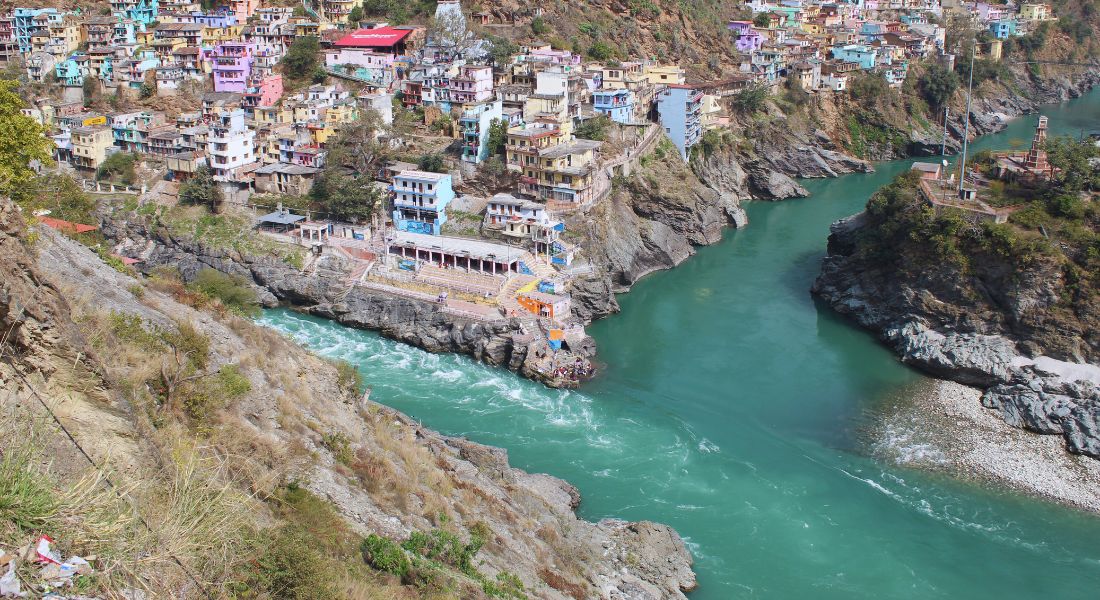The state of Uttarakhand is richly blessed with natural beauty and sacred water bodies. Known for its divine pilgrimage sites, this Himalayan region is also home to numerous rivers in Uttarakhand that originate from glaciers such as Gangotri, Yamunotri, and Pindari. The Uttarakhand rivers list includes both large and small rivers, many of which hold deep mythological significance. Some of the main rivers of Uttarakhand, like the Ganga, Yamuna, Alaknanda, and Kali, are not only vital to the environment but also power hydroelectric projects and support agriculture across the state. From the largest river of Uttarakhand to the longest river of Uttarakhand, each plays a unique role in the region’s spiritual and economic life. Read More
In the sacred land of Uttarakhand, rivers are more than just flowing water—they are living symbols of divine power. The rivers in Uttarakhand are deeply rooted in Hindu mythology and are often associated with gods, sages, and pilgrimage sites. The Ganga Uttarakhand journey, for instance, begins at Devprayag, where the holy Bhagirathi and Alaknanda meet. This region is home to many of the main rivers of Uttarakhand, such as Mandakini, Pindar, and Tons, all revered for their purity and religious relevance. Whether you’re looking for the largest river of Uttarakhand in spiritual terms or the longest river of Uttarakhand in physical length, this list of rivers in Uttarakhand reflects the divine geography of Devbhoomi.
The Himalayan terrain of Uttarakhand is carved by dozens of glacial rivers that play a vital role in the region’s development. These rivers in Uttarakhand not only sustain agriculture and provide drinking water but also power hydroelectric plants and support local biodiversity. From the clean upper stretches of the Ganga Uttarakhand to the powerful currents of the Kali River, these water bodies are essential to the state’s economy and environment. The Uttarakhand rivers list features sacred and resource-rich rivers like the Yamuna, Gaula, and Saryu. The main rivers of Uttarakhand act as lifelines for thousands of villages and towns, while the longest river of Uttarakhand and largest river of Uttarakhand form the core of its hydro-geographical system.
Uttarakhand Rivers List – Major Rivers and Their Significance
Uttarakhand is home to a rich network of rivers that originate from the glaciers of the mighty Himalayas. These rivers in Uttarakhand are not only lifelines for the people living in the hills and plains but also hold immense spiritual, cultural, and ecological significance. The Uttarakhand rivers list includes sacred rivers like the Ganga, Yamuna, and Alaknanda, as well as other key tributaries that nourish the valleys of this divine land. Whether you are exploring the main rivers of Uttarakhand, identifying the largest river of Uttarakhand, or tracing the longest river of Uttarakhand, this guide highlights their origin, journey, and relevance in shaping the identity of Devbhoomi.
List of Rivers in Uttarakhand
1 Ganga River (Ganges)
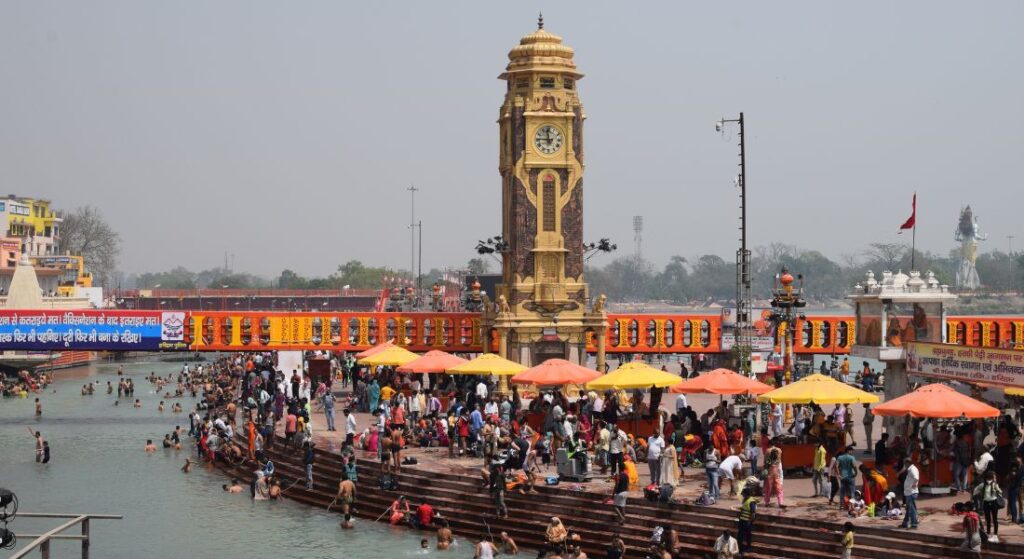
The Ganga River, also known simply as the Ganges, holds a revered position in the list of major rivers in Uttarakhand and across India. It officially originates at the confluence of the Bhagirathi and Alaknanda Rivers in Devprayag and flows through the spiritual heartland of Uttarakhand before entering the plains at Haridwar. With a total length of 2,510 kilometers and 96 kilometers within Uttarakhand, the Ganga is not only one of the longest rivers of Uttarakhand but also the most sacred.
Emerging from glaciers like Satopanth and Khatling, and from peaks such as Kedarnath and Nanda Devi, this mighty river includes tributaries like Mandakini, Dhauliganga, Pindar, and Nandakini — all of which contribute to its divine flow, making it central to the Uttarakhand rivers list. Deeply woven into India’s spiritual and cultural identity, the Ganga in Uttarakhand is a living symbol of purity, salvation, and sanctity. Countless myths describe it as Vishnupadi, the sacred river that flowed from Lord Vishnu’s feet, and King Bhagiratha’s penance is believed to have brought it down to Earth.
These legends make it one of the main rivers of Uttarakhand, attracting millions of devotees each year to places like Haridwar for holy dips, cremations, and religious festivals like the Kumbh Mela. As one of the largest rivers of Uttarakhand, the Ganga also supports various hydropower projects and irrigation systems, while continuing to be a sacred lifeline for the region and the nation.
2 Yamuna River

The Yamuna River, a prominent name in the Uttarakhand rivers list, originates from the Yamunotri glacier at a height of 6,387 meters in the Garhwal Himalayas. It is one of the main rivers of Uttarakhand, flowing through the Lower Himalayas and Shivalik ranges before exiting the state at Dhalipur. Yamunotri, the river’s source, is also a vital stop on the Char Dham Yatra, making Yamuna a spiritually important river in the state.
Known as the longest tributary of India, Yamuna eventually joins the Ganga in Uttarakhand’s neighboring state at the Triveni Sangam, along with the mystical Saraswati. With a total length of 1,376 km, Yamuna plays a crucial role in irrigation across northern India. According to Hindu mythology, she is the daughter of Surya and sister to Yama, the God of Death, giving her the name Yami. While Yamuna is considered sacred, it is now among the most polluted rivers in Uttarakhand and beyond, despite multiple efforts under river conservation projects.
3 Alaknanda River
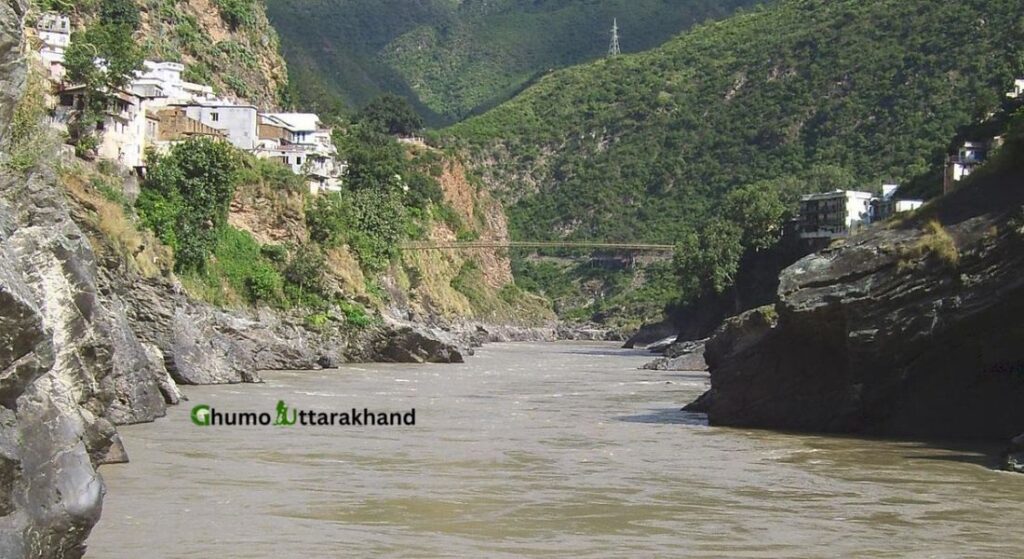
The Alaknanda River, one of the main rivers of Uttarakhand, originates from the Satopanth and Bhagirathi Kharak Glaciers in the Himalayas. Spanning a length of 190 km, this river flows through the Chamoli, Rudraprayag, and Pauri Garhwal districts, forming an important part of the Uttarakhand rivers list. As it journeys through the Garhwal region, Alaknanda meets other significant tributaries like Dhauliganga at Vishnuprayag, Nandakini at Nandprayag, Pindar at Karnaprayag, and Mandakini in Rudraprayag. Finally, at Devprayag, it merges with the Bhagirathi River to officially become the Ganga in Uttarakhand, which is revered as the holiest river in Hinduism.
Among the rivers in Uttarakhand, Alaknanda holds a sacred place, especially since it passes through Badrinath, one of the four pilgrimage sites in the Char Dham Yatra. Its spiritual significance is matched by its adventurous appeal, as the river is known for white water rafting and powerful rapids. Due to its hydrological potential, there are currently six operational hydroelectric projects on the river, with eight more under construction. As part of the list of major rivers in Uttarakhand, Alaknanda is also considered by many as the longest river of Uttarakhand and a crucial contributor to the largest river of Uttarakhand, the Ganga.
4 Bhagirathi River
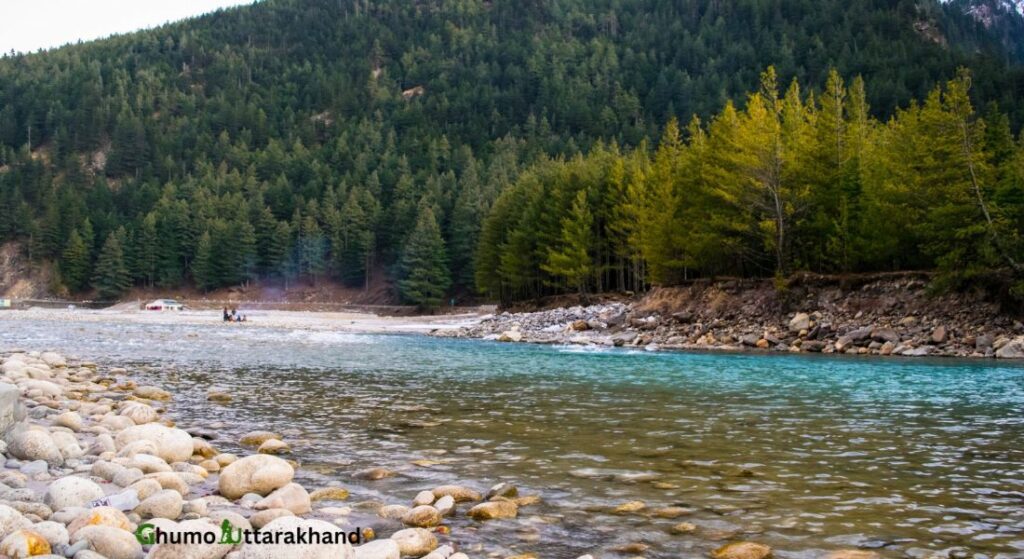
The Bhagirathi River, one of the main rivers of Uttarakhand, originates from Gaumukh at the base of the Gangotri and Khatling glaciers. Revered as a sacred river in Hindu mythology, it flows through Gangotri, a key site on the Char Dham Yatra route. According to legend, the river is named after King Bhagiratha, whose penance brought Ganga to Uttarakhand to cleanse the sins of his ancestors. Along its 205 km course, it is joined by several tributaries such as Kedar Ganga, Jadh Ganga, and Bhilangana. As part of the Uttarakhand rivers list, Bhagirathi holds great spiritual and ecological importance in the Himalayan region.
Among the rivers in Uttarakhand, Bhagirathi stands out for both its holiness and hydrological impact. Flowing from an elevation of 3,892 meters, it passes through spiritually significant areas like Kedarnath, where pilgrims take ritual dips to absolve their sins. The river’s confluence with Bhilangana at Tehri is the site of the Tehri Dam, the tallest in India, which plays a major role in regional energy and water supply. Bhagirathi eventually merges with Alaknanda at Devprayag, marking the official beginning of the largest river of Uttarakhand, the Ganga.
Included in the list of major rivers in Uttarakhand, Bhagirathi is a strong contender for the longest river of Uttarakhand, not just in terms of length, but in its legendary and lifeline status for the state.
5 Mandakini River
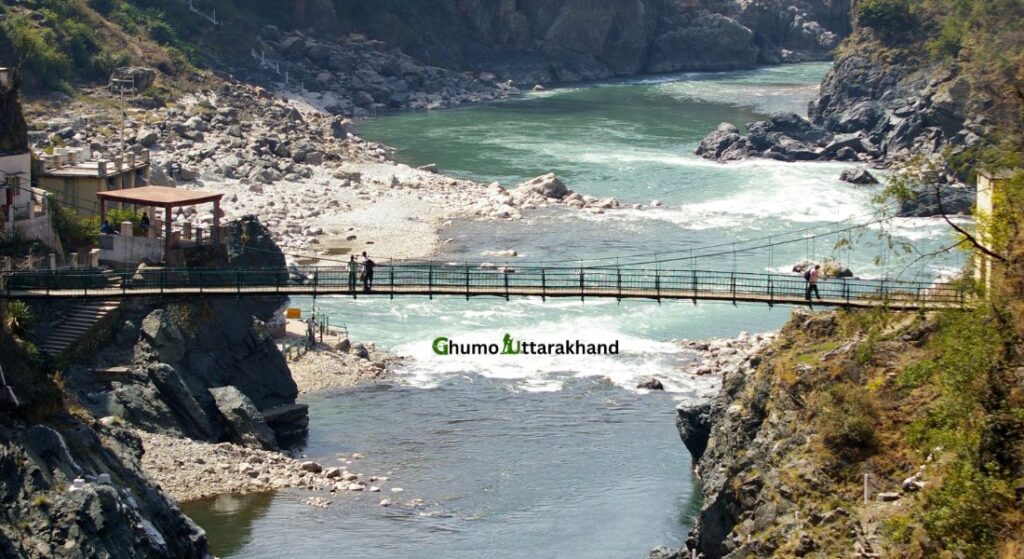
The Mandakini River, emerging from the Chorabari glacier near Kedarnath, is one of the spiritually significant rivers in Uttarakhand. Flowing through the Garhwal region, it merges with Alaknanda at Rudraprayag after confluencing with Kali Ganga and Madhyamaheshwar Ganga. Mentioned in the Bhagwat Geeta, the Mandakini holds divine importance and is often referred to as the “river of air or heaven.” Despite its relatively short length of 72 km, it plays a vital role in the Uttarakhand rivers list due to its mythological relevance and location along the Char Dham route.
Although sacred, the Mandakini River has a powerful presence, especially during monsoons, when it becomes dangerously aggressive. It was responsible for the catastrophic Kedarnath floods in 2013, making it a part of both devotion and disaster history. The river is also favored for white water rafting, offering Grade IV and V rapids, showcasing its wild side. Alongside, the Nandakini River, a quieter tributary, flows from Nanda Ghughati and merges with Alaknanda at Nandaprayag. Though only 56 km long, it too adds to the list of major rivers in Uttarakhand, contributing to the largest river of Uttarakhand, the Ganga.
6 Kali River (Sharda/Mahakali)

The Kali River, also known as the Sharda River, forms part of the India-Nepal border in eastern Uttarakhand. Originating from the Lipulekh Pass, this is the longest river of Uttarakhand in terms of total length within the state. It supports trade, fishing, and hydro projects.
7 Pindar River
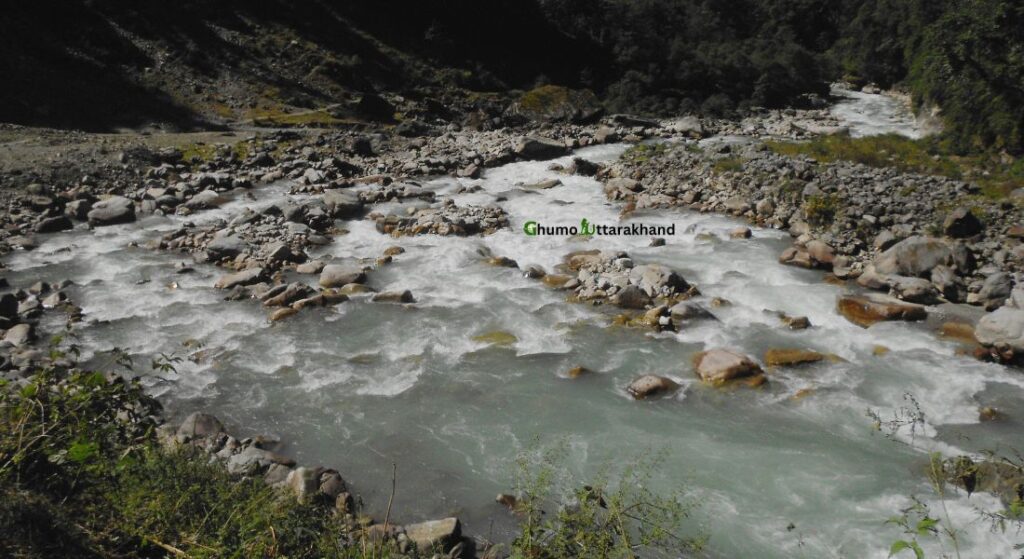
The Pindar River is a prominent glacial river in Uttarakhand, originating from the Pindari Glacier in the Bageshwar district. It flows through scenic valleys and joins the Alaknanda River at Karnaprayag, making it one of the important tributaries in the Uttarakhand rivers list. Known for its natural beauty, the river attracts trekkers and adventure lovers. The Pindar River supports local agriculture and biodiversity in the Kumaon region. It is recognized as one of the main rivers of Uttarakhand for both its ecological and cultural significance.
8 Tons River
Originating from the Bandarpunch Glacier, the Tons River is the largest tributary of the Yamuna River. Known for white-water rafting and scenic beauty, it flows through parts of Garhwal and Himachal Pradesh.
9 Gaula River

The Gaula River starts in the Sattal Lake region and flows through Haldwani and Kathgodam. It plays a vital role in irrigation and drinking water supply in the Tarai belt.
10 Saryu River
The Saryu (Sarju) River flows in the Kumaon region and originates from Sarmool. It joins the Kali River at Pancheshwar and is known for its cultural significance in local traditions.
11 Bhilangna River
The Bhilangna River is a significant tributary of the Bhagirathi River, one of the primary headstreams of the Ganga River. Stretching over a length of 80 kilometers, the river originates from the Khatling Glacier, situated at an altitude of 3,717 meters (approximately 12,195 feet) above sea level in Uttarakhand, India.
12 Dhauliganga River – Garhwal Region
The Dhauliganga River in Garhwal is one of the six main source streams of the sacred Ganga River. It originates from the Deovan Himani glacier and flows through the Garhwal region before merging with the Alaknanda River at Vishnuprayag, a sacred confluence in Uttarakhand.
13 Dhauliganga River – Kumaon Region
In the Kumaon region of Uttarakhand, the Dhauliganga River originates from the Govan Khana Himani glacier. This river is a tributary of the Kali River (also known as the Sharda River). It converges with the Kali River at Tawaghat in the Pithoragarh district, playing a crucial role in the region’s hydrography.
14 Nayar River – Eastern
The Eastern Nayar River is a notable tributary of the sacred Ganga River. It originates from the Dudhatoli ranges in the Garhwal region, specifically in the Pauri district of Uttarakhand. Spanning a length of 94 kilometers, this river flows through several scenic locations including Bharani Sain, Dudhatoli, Thalisain, Baijron, Bironkhal, Manjyari, and Khairsain.
15 Nayar River – Western
The Western Nayar River, also known as Paschimi Nayar, also rises from the Dudhatoli ranges in the Pauri district of Garhwal, Uttarakhand. With a length of 91 kilometers, it too is a tributary of the holy Ganga River. The river supports the ecosystem and local settlements in the region, much like its eastern counterpart.
List of Major Rivers in Uttarakhand
| River Name | Origin | Length (Approx.) | Ends At/Confluence | Region |
|---|---|---|---|---|
| Ganga | Gangotri Glacier | 2,525 km total | Bay of Bengal | All over India |
| Bhagirathi | Gaumukh Glacier | 205 km | Devprayag | Garhwal |
| Alaknanda | Satopanth Glacier | 190 km | Devprayag | Chamoli |
| Yamuna | Yamunotri Glacier | 1,376 km | Allahabad | Western Uttarakhand |
| Bhilangna | Khatling Glacier | 80 km | Tehri (Bhagirathi) | Garhwal |
Religious Importance of Rivers in Uttarakhand
Rivers in Uttarakhand are not just natural water bodies—they are revered as sacred lifelines that hold deep spiritual significance in Indian culture. Among the list of major rivers in Uttarakhand, the Ganga River stands out as the most venerated. Originating from the Gangotri Glacier, the Ganga in Uttarakhand is worshipped as a living goddess and plays a central role in countless Hindu rituals and ceremonies.
The main rivers of Uttarakhand—including the Bhagirathi, Alaknanda, Mandakini, and Saraswati—converge at spiritually significant prayags such as Devprayag, Rudraprayag, Karnaprayag, and Vishnuprayag. These confluences are among the holiest pilgrimage sites and are a vital part of the Uttarakhand rivers list for religious tourism.
The banks of these sacred rivers are home to ancient towns like Haridwar, Rishikesh, and Badrinath, which draw millions of pilgrims annually. Events like the Char Dham Yatra and Kumbh Mela further highlight the immense religious importance of the largest river of Uttarakhand and its tributaries. These holy waters continue to inspire faith, devotion, and cultural identity throughout the Himalayan state
Agricultural & Economic Role
The rivers of Uttarakhand are lifelines for agriculture, especially in the plains and foothills. Rivers like the Ganga, Yamuna, and Kosi provide essential water for irrigation across the Terai and Doon Valley regions. The fertile riverbanks support the cultivation of crops such as rice, wheat, sugarcane, and pulses. These rivers also aid in fisheries, transportation, and livelihoods for local communities, making them crucial to the state’s rural economy.
Ecological Importance
Flowing through dense forests, valleys, and alpine zones, Uttarakhand’s rivers help sustain rich biodiversity. They nourish ecosystems in national parks like Jim Corbett, Valley of Flowers, and Rajaji Tiger Reserve. River systems play a crucial role in maintaining soil moisture, replenishing groundwater, and supporting wetlands and aquatic life. Their seasonal flow cycles are essential for the health of surrounding flora and fauna.
Hydroelectric Projects
Uttarakhand’s fast-flowing rivers are harnessed for hydropower generation, contributing significantly to the state’s energy needs. Major projects like the Tehri Dam (on the Bhagirathi River) and Koteshwar Dam produce clean electricity while aiding in flood control and water storage. Other rivers like the Dhauliganga, Mandakini, and Alaknanda are also tapped for medium to small hydroelectric schemes, boosting both infrastructure and local employment.
Everything You Need to Know About Rivers in Uttarakhand
How many rivers are the re in Uttarakhand?
Uttarakhand is home to over 40 major rivers, many of which originate in the glaciers of the Himalayas. These rivers play a crucial role in the ecology, culture, and spirituality of the region.
Which are the main rivers of Uttarakhand?
The main rivers of Uttarakhand include the Ganga (Ganges), Yamuna, Alaknanda, Bhagirathi, Mandakini, Kali, Tons, and Saryu. Each river holds spiritual, geographical, and ecological importance in the Uttarakhand rivers list.
Which is the largest river of Uttarakhand?
The largest river of Uttarakhand is the Ganga River, known for its religious significance and its vast network of tributaries like the Bhagirathi and Alaknanda.
Which is the longest river of Uttarakhand?
Lorem ipsum dolor sit amet, consectetur adipiscing elit. Ut elit tellus, luctus nec ullamcorper mattis, pulvinar dapibus leo.
Which two rivers meet in Devprayag, Uttarakhand?
At Devprayag, the Bhagirathi River and Alaknanda River converge to form the Ganga River, marking one of the most sacred confluences in India.
What is the birthplace of the Ganga River?
The Ganga River in Uttarakhand originates from the Gangotri Glacier, where it is initially known as the Bhagirathi River. After merging with the Alaknanda at Devprayag, it officially becomes the Ganga.
Which are the Panch Prayag (five river confluences) in Uttarakhand?
The five Prayags or sacred confluences in Uttarakhand are:
-
Vishnuprayag (Alaknanda + Dhauliganga)
-
Nandaprayag (Alaknanda + Nandakini)
-
Karnaprayag (Alaknanda + Pindar)
-
Rudraprayag (Alaknanda + Mandakini)
-
Devprayag (Alaknanda + Bhagirathi)
What are some lesser-known rivers in Uttarakhand?
Apart from the major rivers, the list of major rivers in Uttarakhand also includes lesser-known yet important rivers like the Bhilangna, Gori Ganga, Ramganga, Nayar (East and West), and Dhauliganga.
Why are rivers in Uttarakhand considered sacred?
Rivers in Uttarakhand are worshipped for their divine origins from Himalayan glaciers. Many rivers are associated with Hindu deities and are central to spiritual pilgrimages like the Char Dham Yatra and Kumbh Mela.

